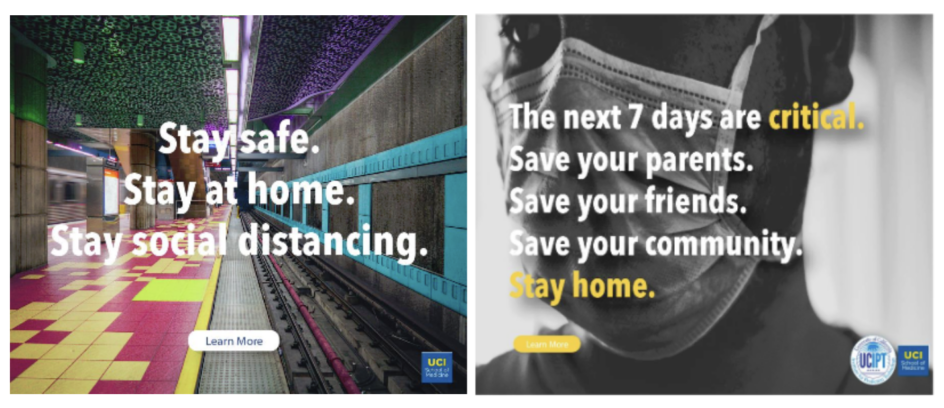Study Explores Use of Online Ads and Individual-Level Mobility Data to Change and Monitor Behavior
What if, during the height of the COVID-19 pandemic, just as you’re searching online for a local bar, an ad pops up that says, “Help prevent the spread of the virus by staying home!” Might that ad affect your plans? And would tracking individual-level mobility data allow public health officials to gauge whether such ads were actually encouraging people to stay home?
These are questions Informatics Professor Sean Young helped address in a recent study. Young, who has a joint appointment between UCI’s Donald Bren School of Information and Computer Sciences (ICS) and the School of Medicine (SOM), collaborated on the study with Renee R. Garett of ElevateU and with Ph.D. student Jiannan Yang and Professor Qingpeng Zhang of City University of Hong. Their findings are available in an open access version of the article, “An online advertising intervention to increase adherence to stay-at-home-orders during the COVID-19 pandemic: An efficacy trial monitoring individual-level mobility data,” which will appear in an upcoming issue of the International Journal of Applied Earth Observation and Geoinformation.

As outlined in the article, the study focused on Chicago, Miami, New York, Dallas and the greater Los Angeles/Orange County area, where citizens had been ordered to stay at home for all but essential activities. The findings suggest that online advertising can effectively increase adherence to public health mandates, and mobility data can be leveraged to track behavior change resulting from such online interventions.
“Just prior to the pandemic, I began advising a startup in the digital advertising space. I learned a lot about ways that top technology companies are able to use digital data, like mobility data, to identify potential customers to purchase products,” says Young, who is also executive director of the University of California Institute for Prediction Technology (UCIPT). “When the pandemic hit, I immediately tried thinking of every way I could potentially help. Doing a study on applying this approach of using mobility data to identify people not adhering to stay at home orders — and encouraging them to stay at home — was one of the first ideas.” Through contacts Young made at the startup, he was already partnering with several technology companies who had the data and tools necessary to study the approach. “I have to especially thank David Johnson for his help,” says Young. Johnson, from the advertising agency Cphere, helped provide data and develop partnerships to help the researchers test two different approaches.
The first approach tested using the public health (stay-at-home) online ads to change people’s behaviors. “That’s a pretty easy one, and one that many organizations already do with things like Facebook and Google ads,” says Young. “But we were able to scientifically test the ads to find that they did change people’s behaviors to decrease their outside travel, potentially reducing the spread of the virus.”
The second approach tested was the use of mobility data to track people’s movement. “No study we know had done this before at an individual level,” says Young. “These approaches can be applied to pretty much any area where you want to change a person’s behavior and can track whether they changed based on their movement.”
The article concludes by outlining actionable insights from the work, recommending that researchers and health departments use online advertising methods for public health behavior change and explore the use of cell phone mobility data as a method for near real-time monitoring of public health behavior change. The need to consider the privacy issues associated with such monitoring was also stressed, as the article suggests researchers explore the ongoing ethical and implementation science questions associated with these approaches.
— Shani Murray